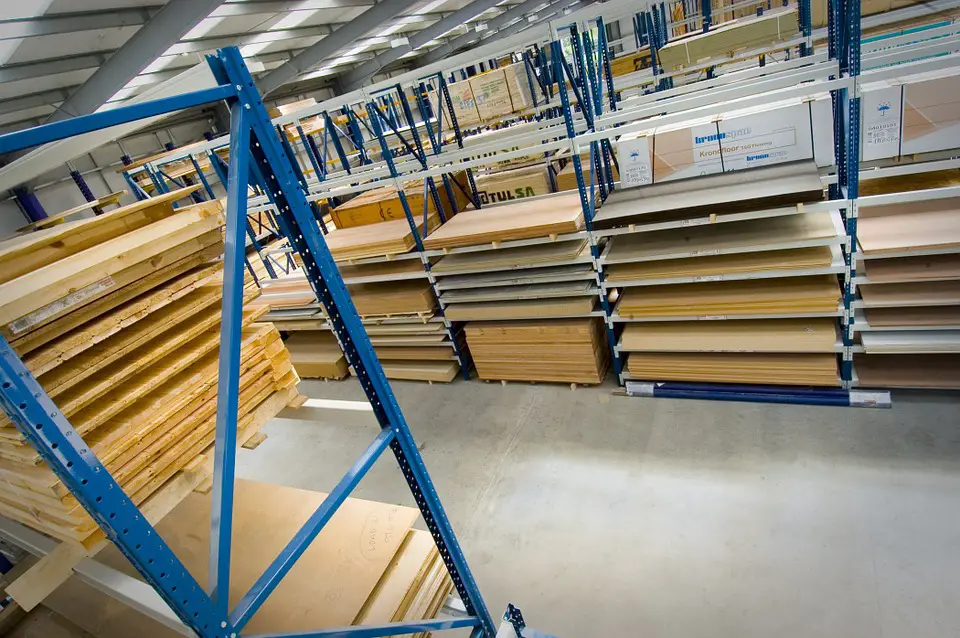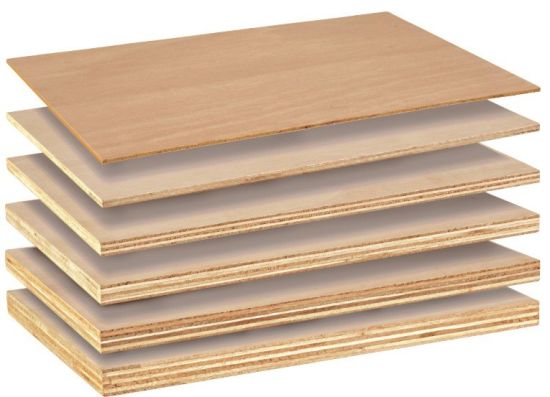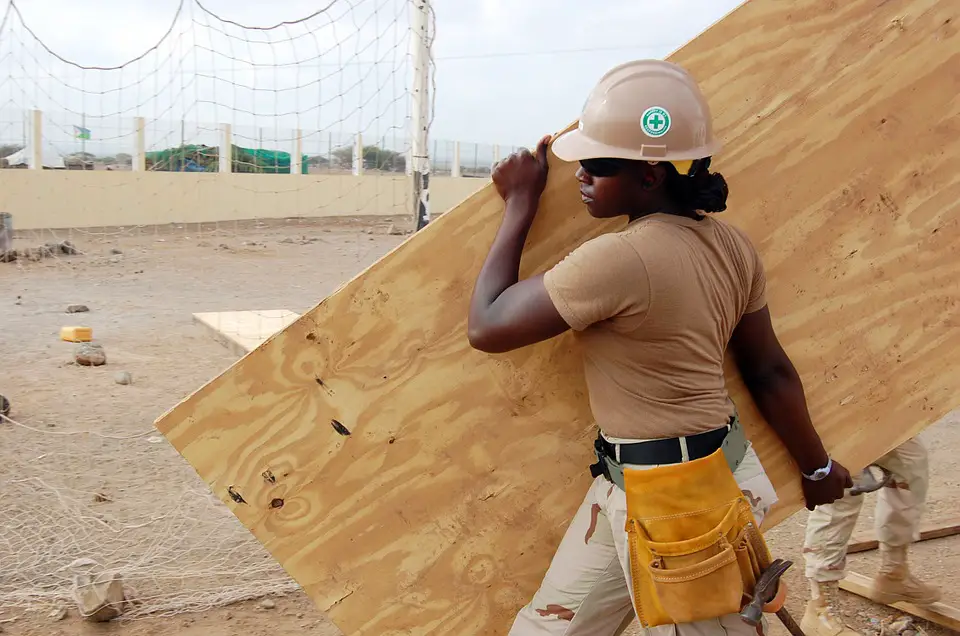Table of Contents
*This post may contain affiliate links. As an Amazon Associate we earn from qualifying purchases.
Plywood is a type of manufactured material made out of a variety of lumber that is layered in sheets or “plies” of veneer and then are glued in a 90-degree orientation to one another. Plywood can be considered an “engineered wood” that resides in the family of manufactured boards and is used in crafting hundreds of thousands of different projects.
The long cellulose cells that make up the bind between the resin and wood form a compositematerial, which is a relatively new engineering method that has been implemented by manufacturing engineers to create and modify new and existing materials into better, stronger and more durable composites.
The key to the strength and application grade of plywood, however, is in the alternation of the grain, which is termed cross-graining. There are many benefits that plywood has to its competitors but above all benefits that this composite material offers against its solid-lumber counterpart is that the cross-graining provides an immense increase in dimensional stability of the wood itself. This is because it is able to distribute the forces that act upon it in different directions along the different orientations of the grain. This helps to minimize grain splitting, fracturing and eventual failure of the material stock.
Other benefits that veneered plywoods offer are that the cross-graining minimizes thermal expansion and shrinkage from all 3-dimensional axis, eliminates splitting due to nailing especially at the edges of the stock. Lastly, it reduces the level of warping that the sheet can experience due to the sheets being balanced by using an odd number of plies.
There are multiple different plywood grades, that all are bought at different prices and can be used differently. Below we are going to go into a little more detail about these grades mean, and what they can be implemented towards.
The Different Grades Of Plywood

The different types of grades that are offered for plywood are the following:
- Grade A – Sanded smooth, paintable. Usually free of manufacturer repairs or knots.
- Grade B – Solid surface with minor manufacturer repairs including splits and knots. Patches or fillers are usually shaped like an American Football.
- Grade C – Tight knots that can range up to 1.5 inches, and knotholes that are up to 1 inch deep. Splits and discoloration are common.
- Grade D – Knots and knotholes are at their largest, up to or over 2.5 inches. Generally, no manufacturer repairs are noted on these grades.
This A-D lettering system helps individuals to easily distinguish the quality of the plywood panel on hand, with the primary difference between which lettering being assigned due to the knot holes, voids and other defects naturally found within the layers of veneer.
The highest quality and most expensive types of plywood are Grades A and B because all large knots are replaced with football shape patches, making them great for workshop projects. Grades C and D of plywood are more economical, and you’ll find more voids and repaired knots on the sheet.
Fun Facts About Plywood

Plywood, interestingly enough, is almost as expensive if not more expensive sometimes than their equal solid wood counterparts. This variability in cost and its ability to rise above its more “pure” counterparts is because the plywood overall cost is more dependent on the grade and aesthetic appearance of the plies, rather than the actual material cost for the wood.
Other limitations that should be addressed regarding plywood grades is the limited selection of ply that is usually in demand, the unreliability in stated sheet thickness versus what the actual thickness of the sheet is, and lastly, the causing for foreign and thinner made veneers.
The limited selection of plywood is mainly due to the fact that suppliers usually only stock the grades or types of plywood that are in demand at the current time. This irreparable domino affects everything, which can cause shortages in the supply of other grades and types of plies, making it very difficult for customers to be able to buy more.
The variability in stated thickness versus actual thickness is a problem because it can affect many of the dimensional tolerances that are used and needed when using plywood for certain DIY projects business creations. This problem is mainly caused by the foreign origin of these materials because many of these foreign countries use a metric system (unlike our country) so the conversions to standard dimensions can cause dimensional variability among the sheets once they reach the United States.
Fun Fact: The United States is actually the only industrialized country in the world that does not predominantly use the metric system as means of measurement.
And thus onto my final point, thin-faced veneers are a common problem found among all different grades and types of plywood. This is a particular problem because thin-faced veneers reduce dimensional stability and rigidity. They also can cause many aesthetic issues when the sheets are sanded, painted, or stained such as discoloration and color transfer through the sheets. This discoloration is similar to that of a black sharpie marker on a white sheet of printer paper.
How To Use TheDifferent Plywood Grades

The core material that is used to make plywood sheets is also one of the most critical factors to take into consideration that can both alter and affect how a plywood sheet reacts to being cut and manufactured into different parts or applications. This factor is critical because the core material can represent the specific type of application that the plywood should be used for, and therefore can help in identifying what possible problems could be encountered if the sheet were to be used.
[amazon box=”B07JMVQN5K”]
For example, construction-type plywood is usually made out of maple plies with a veneer core. However, this type of plywood is prohibited from being used in professional cabinetmaking because construction-type plywood inherently has many variabilities along its surface profile, and stated thickness.
Instead, MDF plies (medium-density fiberboard) are used as the core of other types of plywood. These are preferred because they have minimal variabilities along their surface profile, and thickness. They are also great for helping in minimizing splits and strips along the ply when being cut, grooved, or slotted.
Another drawback with veneer-core plies (construction-type plywood) is that if the veneer is thin enough, and the core of the plywood has enough unevenness throughout its length and width, the unevenness will easily project through the thinned-face veneer.
This is not a problem that can be simply sanded down, so it inadvertently leads to a failed project or a bad quality application. This is why MDF or particleboard cores are preferred, and if one can work around the weaker structural traits, greater finishes and joineries can definitely be achieved.
One particular issue that is slightly unexpected (and also rather mesmerizing) is that many of the types of plywood that are imported are either not graded, or are sold under false names usually claiming to be better brands or grades of plywood than they actually are. This is an issue especially seen in plywood coming from South America and Asia because much of this plywood is purposely not graded due to the many inconsistencies about the species of wood used and its origin.
Also keep in mind, that the grade names being used as deception strategies likely claiming to be a grade or brand that has a stellar reputation when in reality, it is of a brand or grade that has horrible reviews or is in recall/discontinuation.
The rust that should have been instilled in these woods has diminished because discontent consumers are worried about what they are actually buying and using for their projects. This is especially worrisome when plywood is being used as structural material which can cause catastrophic situations in the event that the structural integrity of the plywood fails.
Remember,to always be careful when working with plywood as there are still some safety concerns to be aware of. Always remember to wear a mask when working around treated wood as it can be toxic, so beware of plywood dust. As well, there are questionable health-concerning adhesive chemicals used in plywood, such as formaldehyde glue to be cautious of. But other than that, plywood is the perfect option for all of your DIY project needs, it’s just important to be educated and knowledgeable of what it is that you are buying.
Plywood For Your Next Project

If,this feels like a plywood overload don’t be too alarmed. I, too, walked around the lumber section of Home Depot and got overwhelmed and flustered at the seemingly never-ending stacks of plywood lined floor to ceiling. With costs ranging anywhere from a few dollars to even a few hundred, it is important to understand the structural differences in all the multiple grades of plywood.
The big question to ask yourself before buying plywood is just what are you making and where will it be located? This will help you to better determine beforehand which grade of plywood you are needing and if you are wanting it to be pressure treated or not. I suggest pressure-treated plywood for outdoor projects, as its survival chemically-treated strength helps to ward off all insects, mold and other weather damaging things.
Alright, so now are you ready to start your plywood project?!
Great, I hope this guide helped you to understand just a little more about the materials you are working with.
Happy building!


